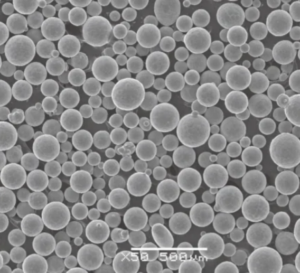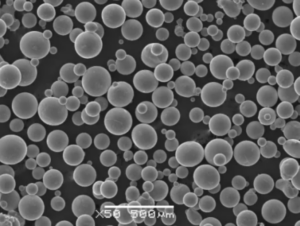ろう付け合金、特に工業用途のろう付けに関しては、 BNi-7粉末 は、技術的な会話でよく出てくる名前である。このパウダーが際立つのは、そのユニークな特性、組成、そして様々な分野での用途のためである。しかし、BNi-7 粉末とは一体何なのか?BNi-7は他のろう付け用粉末とどのように異なり、競合他社と比べてどのような利点があるのでしょうか。この包括的なガイドでは、BNi-7 粉末の複雑さを深く掘り下げ、その化学組成から実際の用途や利点に至るまで、あらゆることを探っていきます。
他のパウダーと比較して、どこが優れていて、どこが劣っているのかを確認する。
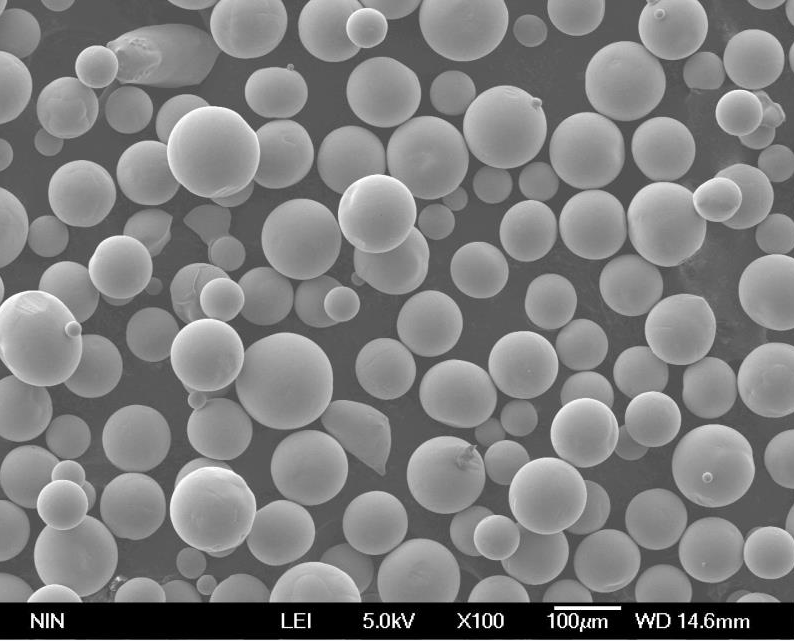
BNi-7粉末の概要
BNi-7粉末は、高温ろう付け用途に広く使用されるニッケル系ろう材です。優れた流動特性、耐食性、およびステンレス鋼、超合金、耐熱金属などのさまざまな母材との適合性で知られています。特にBNi-7は融点が低いため、接合部の強度を保ちながら精密な低温ろう付けを必要とする用途に最適です。
BNi-7パウダーが特別なのはなぜでしょう?その秘密は、精密な配合と、機械的強度、耐薬品性、熱安定性が最も重要視される厳しい環境下での適応性にある。
BNi-7パウダーの主な特徴:
- ホウ素とケイ素を多量に含むニッケル基合金。
- 他のニッケルブレージングパウダーに比べ、融点が低い。
- 耐酸化性、耐腐食性に優れている。
- 航空宇宙、自動車、熱交換器製造に最適。
- 広範囲に熱を加えることなく、強靭で耐久性のある接合部を形成。
| キー・プロパティ | BNi-7パウダー |
|---|---|
| 溶解範囲 | 970°C - 1000°C |
| 構成 | Ni、Si、B、Fe、C |
| 耐食性 | 高い |
| 互換性 | ステンレス鋼、超合金など |
| 流動性 | 素晴らしい |
BNi-7粉末の組成
BNi-7粉末は、特定の用途で優位性を発揮する特殊な組成を誇っている。BNi-7粉末の最も重要な成分は、ニッケル(Ni)、ケイ素(Si)、ホウ素(B)である。各元素は、ろう付け時の粉末の性能に重要な役割を果たし、完成した接合部の全体的な特性に影響を与えます。
構成比
| エレメント | 構成比(%) | 役割 |
|---|---|---|
| ニッケル(Ni) | 92 - 93.5 | 構造的完全性と耐食性を提供。 |
| ケイ素 (Si) | 4.5 - 5.5 | 融点を下げ、流動特性を高める。 |
| ホウ素(B) | 1.4 - 1.8 | 融点降下剤として働き、濡れ性を向上させる。 |
| カーボン(C) | ≤ 0.06 | 接合部の微細構造と硬度を制御する。 |
| 鉄(Fe) | ≤ 0.5 | フローを損なうことなく強度を高めるのに役立つ。 |
主成分であるニッケルは、BNi-7に堅牢性と高温および酸化に対する耐性を与え、シリコンはろう付け時の材料のスムーズな流れを助ける。一方、ホウ素は融点を下げ、強く安定した接合を形成するために重要な濡れを助ける。
種類 BNi-7パウダー および代替案
BNi-7粉末は特定の用途に優れているが、特にコスト、性能、特定の環境ニーズに基づいて選択肢を比較する場合には、その代替品を知ることが不可欠である。ここでは、BNi-7を含む10種類の一般的なブレージングパウダーを、それぞれの特徴とともに紹介する:
ブレージングパウダーとその説明
| ろう付け粉末 | 構成 | 融点 (°C) | 主な特徴 | 用途 |
|---|---|---|---|---|
| BNi-1 | Ni、Si、B、Fe | 955 - 1005 | 強度は高いが融点が高い | 航空宇宙、高圧環境 |
| BNi-2 | Ni、Cr、Si、B | 970 - 1025 | 強度と耐食性 | タービンブレード、熱交換器 |
| BNi-3 | Ni、Si、B | 980 - 1065 | 高い強度と適度な流動性 | ステンレススチール、高強度ジョイント |
| BNi-4 | Ni、Cr、Si、B | 1000 - 1100 | 優れた流動性と抵抗 | 高温・耐摩耗エリア |
| BNi-5 | Ni、Cr、Si、B | 1050 - 1120 | 優れた耐食性 | 過酷な化学環境 |
| BNi-6 | Ni、Cr、Si、B | 1050 - 1100 | 汎用性が高く、高温のジョイントに最適 | 工業炉、自動車 |
| BNi-7 | Ni、Si、B | 970 - 1000 | 低温、高流量、優れた耐食性 | 航空宇宙、熱交換器、エレクトロニクス |
| CuP-7 | Cu、P | 645 - 780 | 融点が低く、銅に最適 | 配管、HVACシステム |
| Ag-45Cd | Ag、Cd、Zn、Cu | 605 - 620 | 高延性、低融点 | 電子機器、精密機器 |
| NiCrSi-B-4 | Ni、Cr、Si、B | 980 - 1080 | 高い強度と延性 | 高強度ジョイント、タービンブレード |
BNi-7は優れた流動特性を持ち、低温用途では傑出しているが、強力な競争相手がいる。BNi-5のような粉末は耐薬品性に適しており、BNi-6は幅広い高温条件に対応できる汎用性がある。
BNi-7粉末の特性
BNi-7パウダーが、あらゆる産業界にとって魅力的なのはなぜか?それは特性にある。
- 低融点:BNi-7粉末は比較的低い温度(970℃~1000℃)で溶融します。そのため、材料を過度の熱にさらしたくない用途に最適です。
- 優れた流動性:BNi-7の組成は、接合部にスムーズに流れ込み、均一で一貫性のある接合を可能にする。
- 耐食性:BNi-7はニッケル含有量が高いため、過酷な環境下でも耐酸化性、耐食性に優れています。そのため、航空宇宙や自動車などの高応力産業での使用に最適です。
- 様々な素材との適合性:ステンレス鋼、超合金、耐熱性金属を扱う場合でも、BNi-7は対応可能です。その汎用性の高さは、様々な産業用途で広く使用されている理由の一つです。
BNi-7粉末の主な特徴
| 特徴 | 詳細 |
|---|---|
| 溶解範囲 | 970°C - 1000°C |
| 耐食性 | 特に高温および酸化的環境において優れている。 |
| 流動性 | 関節への流れがスムーズ |
| 硬度 | 中程度の硬度で、熱処理により改善可能。 |
| 互換性 | ステンレス鋼、超合金、その他のニッケル基合金に適している。 |
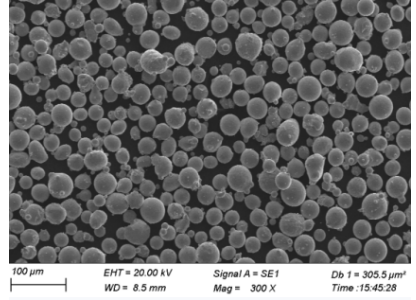
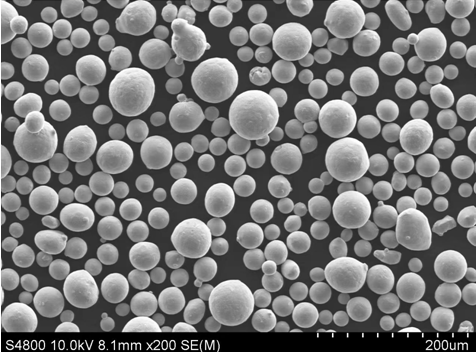
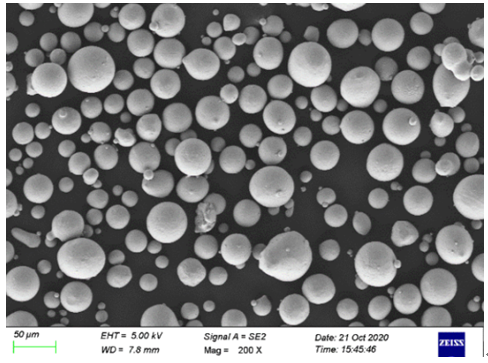
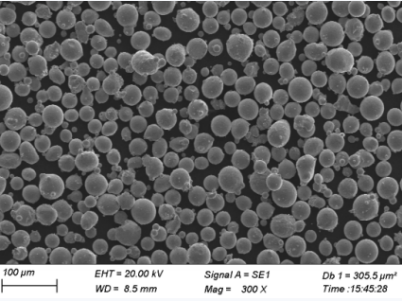
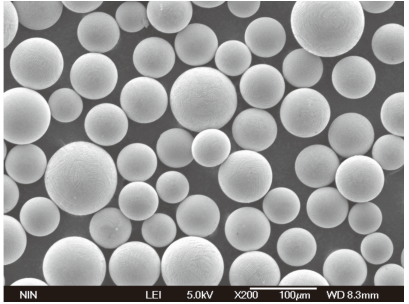

BNi-7粉末の用途
BNi-7粉末は、その優れた機械的特性と汎用性により、幅広い産業用途で使用されています。航空宇宙からエレクトロニクスまで、BNi-7粉末の様々な用途について詳しく見てみましょう。
BNi-7粉末の用途
| 産業 | 用途 |
|---|---|
| 航空宇宙 | タービンブレード、燃焼室、高温エンジン部品のろう付け。 |
| 自動車 | 排気システム、触媒コンバーター、熱交換器に使用。 |
| エレクトロニクス | 低温ろう付けのため、電子機器部品の接合に最適。 |
| HVACシステム | 暖房、換気、空調に使われる銅やステンレスの部品のろう付け。 |
| 医療機器 | 高強度、耐食性ジョイントが重要な精密機器に使用。 |
| エネルギー部門 | タービンや熱交換器システムの部品のろう付けに不可欠。 |
| 配管工事 | 強力で漏れのないシールを形成する能力があるため、配管によく使用される。 |
BNi-7’の適応性、低い溶融温度、耐久性は、厳しい条件下で一貫した高性能の接着を必要とする産業にとって第一の選択肢となる。
仕様、サイズ、規格
BNi-7粉末を使用する場合、特殊な産業に従事する人々にとって、特定のサイズ、規格、グレードを遵守することが不可欠です。これにより、製造工程における安全性、信頼性、一貫性が確保されます。
BNi-7パウダー仕様
| プロパティ | 価値 |
|---|---|
| 融点 | 970°C - 1000°C |
| パウダーサイズ | 325メッシュ、100メッシュ、カスタムサイズあり |
| 準拠 | AWS A5.8、AMS 4777、ISO 17672 |
| パウダーフォーム | 微粒化パウダー |
メーカーは、さまざまなろう付け技術や用途に対応するため、さまざまなサイズや形状を提供している。標準規格に準拠しているため、パウダーは必要な業界規制に適合しており、航空宇宙および医療用途に適しています。
サプライヤーと価格
BNi-7粉末 は世界中の様々なサプライヤーから容易に入手可能であり、それぞれがパウダーの量、純度、形状によって異なる価格帯を提示している。
BNi-7粉末のサプライヤー
| サプライヤー | 価格(1kgあたり) | 地域 |
|---|---|---|
| ルーカス=ミルハウプト | $150 - $250 | 北米、ヨーロッパ |
| ハリス・プロダクツ・グループ | $140 - $240 | グローバル |
| ユミコア | $145 - $255 | ヨーロッパ、アジア |
| ジョンソン・マッセイ | $135 - $230 | 北米、ヨーロッパ |
| ウェスコ | $130 - $220 | アメリカ、カナダ |
| メタライゼーション社 | $145 - $240 | イギリス、ヨーロッパ |
| ウォール・コルモノイ | $150 - $260 | グローバル |
価格は、産地、純度、粉末の形状によって大きく異なる。また、多くのサプライヤーが工業用の大量注文に対して一括割引を提供しており、大規模メーカーにとっては経済的である。
BNi-7粉末の利点
なぜBNi-7パウダーを選ぶべきなのか?主な理由は以下の通りである:
BNi-7粉末の利点
- 低融点:BNi-7は、他のニッケル基ろう付け合金に比べ、融点が著しく低いため、過熱による母材へのダメージが少ない。
- 耐食性:高いニッケル含有量により、特に高温環境下での卓越した耐酸化性と耐腐食性を実現。
- スムーズな流れ:小さな隙間にも難なく流れ込み、均一な継ぎ目を形成できるため、精密作業に最適。
- 互換性:さまざまな素材と接着できるため、さまざまな産業で汎用性がある。
- 熱への露出を減らす:溶融に必要な熱量が少ないため、ろう付けされる材料がゆがんだり歪んだりするリスクが少ない。
BNi-7パウダーの欠点
- コスト:BNi-7粉末は、他の選択肢(特に銅ベースの粉末)よりも高価であるため、コスト重視の用途にはあまり適していない。
- 高温用途には不向き:非常に高温になるようなプロジェクトの場合は、BNi-5のような耐熱性の高いものを選ぶとよいだろう。
- 限定硬度:非常に高い硬度が要求される用途では、BNi-7で形成される接合部の強度を高めるために追加の処理が必要になる場合がある。
BNi-7粉末と他の金属粉末との比較
BNi-7は、市場で人気のある他のブレージングパウダーと比較してどうなのでしょうか?見てみよう:
| 特徴 | BNi-7 | BNi-5 | CuP-7 | Ag-45Cd |
|---|---|---|---|---|
| 融点 | 970°C - 1000°C | 1050°C - 1120°C | 645°C - 780°C | 605°C - 620°C |
| 耐食性 | 高い | 非常に高い | 中程度 | 低い |
| コスト | 中程度 | 高い | 低い | 高い |
| アプリケーションの適合性 | 航空宇宙、熱交換器 | 化学環境 | 配管、HVAC | エレクトロニクス、楽器 |
| 流動性 | 素晴らしい | 中程度 | 素晴らしい | 非常に良い |
BNi-7パウダーと他の金属パウダーの比較:分解
BNi-7と他の粉末を比較すると、それぞれの選択肢に長所と短所があることは明らかである。例えば、BNi-5は融点が高く、耐食性に優れているため、化学処理プラントのような過酷な環境に適しているかもしれない。一方、CuP-7は配管のような用途で輝きを放ち、低融点と優れた流動性により経済的な選択肢となる。
BNi-7は、堅牢で耐食性に優れた接合部を必要とする低温ろう付け用途でその真価を発揮する。電子機器に使用されるAg-45Cdと比較すると、BNi-7は耐熱性の点ではるかに優れているが、卑金属が使用されるため、価格は高くなる。
長所と短所 BNi-7パウダー
BNi-7粉末の利点と限界を理解することで、プロジェクトに適したろう材を選択する際に、十分な情報を得た上で決定することができる。
BNi-7粉末の利点
| メリット | なぜ重要なのか |
|---|---|
| 低融点 | デリケートな素材への熱ストレスを軽減し、反りを防ぎます。 |
| 優れた流動性 | 手の届きにくい部分でも均一な接合部を確保し、全体的な品質を向上させます。 |
| 耐食性 | 特に高熱や腐食性の環境において、ろう付け部品の寿命を延ばす。 |
| 汎用性 | 幅広い金属に対応し、さまざまな産業で使用可能。 |
| より低い熱要件 | 精密工学において特に重要な、母材金属へのダメージを最小限に抑えます。 |
BNi-7粉末の限界
| 制限 | 欠点となる理由 |
|---|---|
| より高いコスト | 銅ベースの合金に比べ、BNi-7は価格が高く、大規模なプロジェクトの予算に影響を与える可能性がある。 |
| 超高温には適さない | 使用環境が定期的に1000℃を超える場合、BNi-7はBNi-5のような他の選択肢ほど持ちこたえられないかもしれない。 |
| 限定硬度 | 高硬度が要求される用途では、ろう付け後の追加熱処理が必要な場合がある。 |
BNi-7パウダーの使い方:ステップバイステップガイド
次のプロジェクトでBNi-7粉末を使用する場合、最適な結果を得るためには正しいろう付け手順に従うことが不可欠である。BNi-7は比較的扱いやすいが、そのニュアンスを理解することで、最良の接合を得ることができる。
ステップ1:表面処理
ろう付けの前に、母材の表面を十分に洗浄しなければならない。このステップでは、接合プロセスの妨げとなる酸化物、油分、汚れを除去する。使用する材料によって、研磨剤による洗浄、化学薬品による洗浄、またはその両方が行われる。
ステップ2:フラックスの塗布
材料によっては、加熱プロセス中の酸化を防ぐためにフラックスを塗布することが不可欠です。しかし、BNi-7の多くの用途、特に真空ろう付けでは、制御された環境により酸化防止の必要がないため、フラックスを必要としない。
ステップ3:パウダーの塗布
次に、BNi-7パウダーを接合部分に塗布する。これは、接合面全体に均等に行き渡るように、パウダーを刷毛で塗ったり、振りかけたりして行います。また、BNi-7パウダーをバインダーと混合したペーストとして塗布することもあり、精密な用途ではよりコントロールしやすくなります。
ステップ4:加熱
パウダーが所定の位置に収まったら、いよいよアセンブリを加熱する。セットアップにもよるが、これは炉、トーチ、または誘導加熱で行うことができる。重要なのは、均等な熱分布が得られるように徐々に温度を上げることで、970℃から1000℃の間に達し、BNi-7が溶けて接合部に流れ込むようにする。
ステップ5:冷却と後ろう付け
接合部をろう付けした後は、自然冷却する。場合によっては、接合部の硬度や強度を高めるために、ろう付け後の熱処理が必要になることがある。
BNi-7パウダーのサプライヤーと価格比較
高品質のBNi-7粉末を調達することは、ろう付け作業を成功させるために極めて重要である。主要サプライヤーとその価格について詳しく見てみよう。
BNi-7パウダーのトップサプライヤー
| サプライヤー | 製品タイプ | 価格帯(kgあたり) | 出荷地域 | リードタイム |
|---|---|---|---|---|
| ルーカス=ミルハウプト | アトマイズパウダー、ペースト | $150 - $250 | 北米、ヨーロッパ | 1~2週間 |
| ハリス・プロダクツ・グループ | アトマイズパウダー | $140 - $240 | グローバル | 2~3週間 |
| ウォール・コルモノイ | ファインパウダー、カスタムブレンド | $150 - $260 | グローバル | 1~3週間 |
| ジョンソン・マッセイ | 微粒子パウダー | $135 - $230 | 北米、ヨーロッパ | 1~2週間 |
| ウェスコ | アトマイズパウダー | $130 - $220 | アメリカ、カナダ | 1~2週間 |
| ユミコア | パウダー、カスタマイズサイズ | $145 - $255 | ヨーロッパ、アジア | 2~4週間 |
BNi-7粉末は世界中のサプライヤーから広く入手可能である。価格は、純度、粒子径、バルク数量などの要因によって異なります。大量注文はしばしば値崩れし、リードタイムは需要によって変動することに留意してください。
BNi-7パウダーさまざまな産業での応用
BNi-7粉末は非常に汎用性が高く、航空宇宙、自動車、電子機器など様々な産業で使用されています。ここでは、最も一般的な用途と、それぞれのケースでBNi-7が好まれる理由を説明します。
1.航空宇宙産業
航空宇宙用途では、BNi-7粉末はタービンブレード、エンジン部品、燃焼室のろう付けに使用される。BNi-7は融点が低く、耐酸化性に優れた強固な接合部を形成できるため、高熱や機械的ストレスがかかる環境では重要な材料となります。BNi-7の優れた流動性により、複雑で薄肉の部品でもその完全性を損なうことなくろう付けが可能です。
なぜBNi-7なのか?
高いニッケル含有量は、高温と腐食環境の両方に対する優れた耐性を提供し、これは過酷な条件で使用される航空宇宙部品にとって不可欠である。
2.自動車産業
自動車分野では、BNi-7粉末は触媒コンバーター、排気システム、熱交換器などの部品のろう付けに使用されている。ここでの主な利点は、比較的低温で漏れのない強固な接合部を形成できることで、デリケートな自動車部品の熱変形を防ぐのに役立っている。
なぜBNi-7なのか?
その低融点と耐食性は、排気ガスや高温に長時間さらされるろう付け部品にとって重要である。
3.エレクトロニクス産業
BNi-7パウダーは、精密な低温ろう付けを必要とする部品の接合にも、エレクトロニクス業界で広く使用されています。マイクロエレクトロニクスから大型アセンブリーまで、BNi-7は繊細な電気部品を損傷することなく、強固で信頼性の高い接合を保証します。
なぜBNi-7なのか?
BNi-7は、過度の熱にさらされることなく、小さく複雑な接合部に流れ込む能力があるため、繊細な電子部品に最適です。
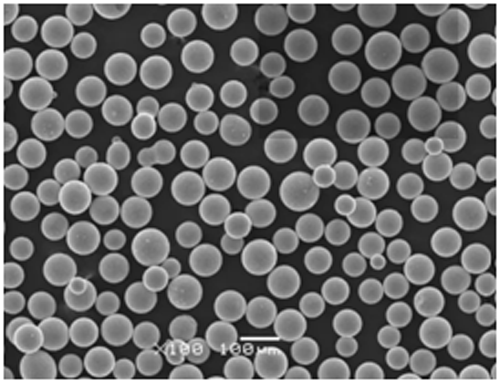
よくある質問
1.BNi-7粉末は何に使われるのか?
BNi-7粉末は、航空宇宙、自動車、電子機器などの産業における高温ろう付け用途に使用されます。優れた耐食性、低融点、強固で耐久性のある接合部を形成する能力により、ステンレス鋼、超合金、耐熱材料などの金属のろう付けに最適です。
2.BNi-7粉末を使用する利点は何ですか?
BNi-7粉末には以下のような利点がある:
- 融点が低いため、母材への熱ストレスが少ない。
- 流動性に優れ、均一な接合部を形成しやすい。
- 腐食や酸化に対する高い耐性、特に高温環境下での耐性が高い。
3.BNi-7粉末は航空宇宙産業のような高ストレス環境に適していますか?
はい、BNi-7粉末は、その強力な機械的特性、耐食性、高温に耐える能力により、航空宇宙用途に広く使用されています。特にタービンブレード、エンジン部品、その他の重要部品のろう付けに有用です。
4.BNi-7粉末は、BNi-5などの他のニッケル基ろう付け合金と比較してどうですか?
BNi-7粉末はBNi-5と比較して融点が低いため、低温ろう付け用途に適している。しかし、BNi-5は極限環境下での耐食性と強度に優れているため、化学処理やその他の高応力産業でよく使用される。
5.BNi-7粉末は真空ろう付けに使用できますか?
はい、BNi-7粉末は低融点で流動性が高いため、真空ろう付けに最適です。実際、フラックスを使用せず、クリーンで強力な接合が要求される真空ろう付けによく使用されています。
6.BNi-7パウダーの品質を保つためには、どのように保管すればよいですか?
BNi-7パウダーは、湿気や汚染物質を避け、乾燥した涼しい環境で保管してください。適切な
を保管することで、その特性を維持し、長期にわたって流動性とろう付けの品質を維持することができる。
結論
BNi-7粉末 は、低融点、優れた流動性、耐腐食性および耐酸化性により珍重される、ろう付けの世界で傑出した材料です。航空宇宙、自動車、エレクトロニクスのどの分野でも、このパウダーを使用することで、熱への露出を最小限に抑え、母材の完全性を保ちながら、強固で信頼性の高い接合部を形成することができます。
様々なサプライヤーが様々な形状やサイズのBNi-7パウダーを提供しているため、特定のニーズに合った選択肢がたくさん見つかるでしょう。ただ、コストとその卓越した性能のような長所と短所を比較検討し、アプリケーション固有の要件を考慮することを忘れないでください。
適切なろう材を選択することが、長持ちする接合部と圧力下で破損する接合部の違いとなります。BNi-7パウダーは、信頼性が高く、高性能なオプションが必要な場合に、一貫してその性能を発揮します。
